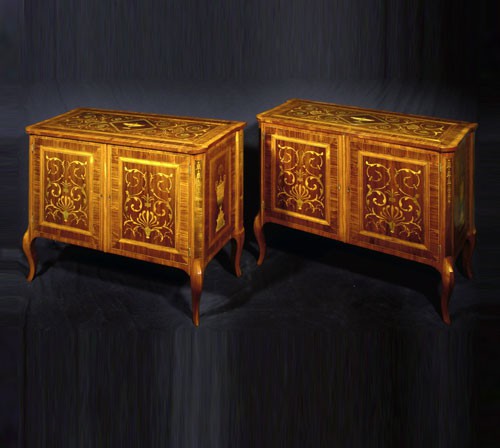
 |
|
|
 |
|
|
A Fine Pair of George III Rosewood, Kingwood and Marquetry Commodes Attributed To Christopher FuhrloghCIRCA 1770 Height: 32.25" Width: 40.25" Depth: 18" Inventory Number 8241-130 Price$120,000DescriptionEach with rectangular crossbanded top elaborately inlaid with a central Classical urn set between foliate scrollwork, over a pair of doors inlaid with anthemions issuing conforming scrollwork set between canted corners with pendant bellflower decoration, and opening to two shelves; the sides inlaid with a large Classical urn; raised on cabriole legs. Illustrated- Additional InformationUnique in design, this beautifully inlaid George III pair of commodes exhibits many different stylistic influences. During the second half of the eighteenth century, a large wave of highly skilled continental craftsmen immigrated to London, resulting in a rich cross-fertilization of English, Scandinavian, French and German designs. The form of the cabinet draws upon the neo-classical rectilinear lines of Louis XVI furniture, but the use of inlay as opposed to gilt-bronze mounts is Northern. This pair of commodes was most likely produced by the noted Swedish cabinet maker and ebeniste, Christopher Fuhrlogh. He was born in Stockholm around 1740. As a young man, he traveled to Paris and Amsterdam, and eventually settled in London where he and his future brother-in-law worked in the highly fashionable shop of John Linnell by 1766. Furlogh and his brother-in-law established their own firm at 24 Tottenham Road by 1770 where they attracted commissions from royalty and aristocracy, including the Prince of Wales and Lord Howard. Features that link this piece to Furlogh include the intricate neo-classical inlays that incorporate foliate festoons. |
 |